M/S (Mid/Side) Processing
PRESSWERK is capable of Mid/Side processing. This is a classic feature found in many EQs and comps. However, it is also a tricky function to understand and use correctly. Here I would like to give you a basic overview of Mid/Side, how it works, what to look out for, and how to actually use it with PRESSWERK.
M/S Recording
Mid/Side processing is a concept that originated in 1934 by Alan Dower Blumlein (UK), an electronics engineer and recording engineer. It was originally a microphone placement method for recording in which two microphones, a unidirectional and the other a bi-directional, as shown in the figure below. This is called the MS method, which allows for easier adjustment of the stereo image and center volume after recording compared to normal stereo. Recordings made with the MS method could be easily converted to normal stereo and vice versa, so it continues to be used today for mixing, mastering, and other purposes.
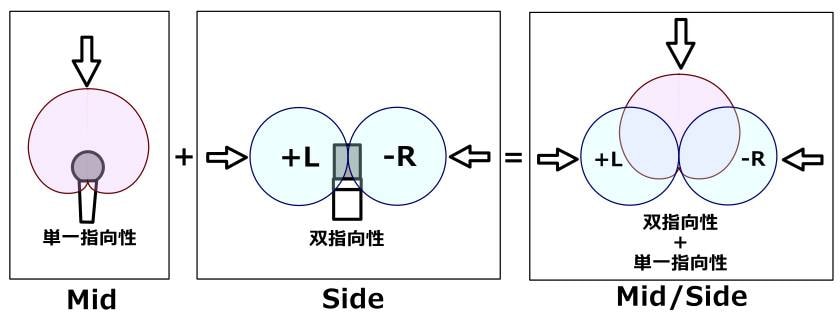
Although the terms “Mid” and “Side” seem intuitive based on the directivity of the microphone and its setting, it is important to note that the signal is actually converted to a LR stereo signal when listened to through speakers or headphones.
Mid can be thought of as the center to Side, but it is simply a monaural signal obtained by a unidirectional microphone and it’s not the only input for the center sound. Monaural seems more appropriate than Mid in terms of name. It established the center as the main actor in a recording, and it was excellent for volume control with the supporting players.
Side is just a 1-channel signal obtained with a bidirectional microphone. In other words, it is a mix of the left sound and the phase-reversed right sound. As you can see from the directivity, the front and rear sounds are ideally input equally to both diaphragms and cancel each other out. In other words, the center sound is canceled. The M/S recorded Side is then split into left and right channels and mixed with the Mid to create a spatially expansive stereo sound.
Stereo to M/S processing back to stereo
When M/S processing is performed by a plug-in, the process is to convert normal stereo (2ch) to M/S (2ch) (encoding), process it here, and then return it to normal stereo (2ch) again (decoding). The diagram below illustrates this process. Addition is the synthesis of waveforms and subtraction means the synthesis of phase-reversed ones.

I am going to explain the above process using specific waveforms and formulas. It may not sound very interesting, but if you have a mathematical understanding of the M/S process, you will be able to use it effectively and without failure. On the other hand, you should know that if you do not know the principle, the process may cause a big failure. In this column, I will briefly explain the minimum basic principles required for M/S processing. The following is a sine wave that is -12dB in the left channel and -18dB of the same sine wave in the right channel.
- L: -12dB(0.25)
- R: -18dB(0.125)

The sound is as follows. It is a sine wave sounding from the left side.
Below is a Lissajous figure, but since it is a sine wave, it can also be viewed as the direction of the sound. The line marked 50% is that, and can be taken as the sound coming from the left angle. For reference, the sound 100% from directly left is in this position.
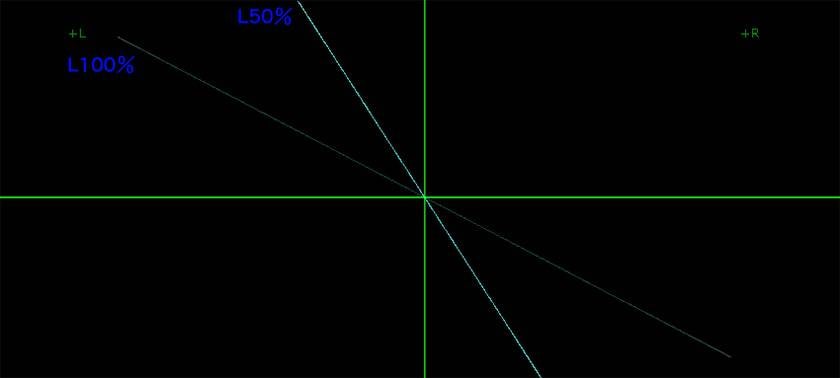
Encoding
The M/S and LR conversion formulas are far from intuitive and require a lot of care. The thing to keep in mind is that Mid is a mono signal of (L+R)/2, which also encompasses the left and right signals and contains most of the information. Side, on the other hand, is (L-R)/2, so if the exact same signal is contained in the left and right channels, it is eliminated. In other words, the sound localized in the center is eliminated; the Mid sound is not.
The above waveform is encoded as follows. The calculation is done linearly and converted to dB at the end.
- Mid: (0.25+0.125)/2=0.1875=-14.5dB
- Side: (0.25-0.125)/2=0.0625=-24dB

Post-encoding processing
This is the M/S processing section. It is better to think of the audio signal in this state as a different view of the world from the stereo in the LR. If the volume is changed here, the volume and localization will change when the signal is returned to LR, creating a pseudo-stereo effect, or vice versa. If phase inversion occurs, the sound becomes artificial, and too much of it can cause discomfort, so it must be handled carefully and with an understanding of how it works.
Typical effects that support M/S processing are EQ and comp. EQ adjusts the volume by frequency, while comp adjusts the volume with respect to time. First of all, it is necessary to know how the volume is affected by the M/S processesing. Once you know this, you should have no trouble with M/S processing, whether it is EQ or comp.
Raising the Mid volume will move the localization toward the center
Mid is simply the mono sum of LR, and if there is a side sound, raising or lowering this volume will affect it and its phase. To put it simply, localization changes.
If the Mid volume is increased by 6dB with the above sine wave and then returned to a stereo signal, the volume is increased and the localization is closer to the center.
- L: (0.1875/0.5+0.0625)=0.4375=-7.2dB
- R: (0.1875/0.5-0.0625)=0.3125=-10.1dB
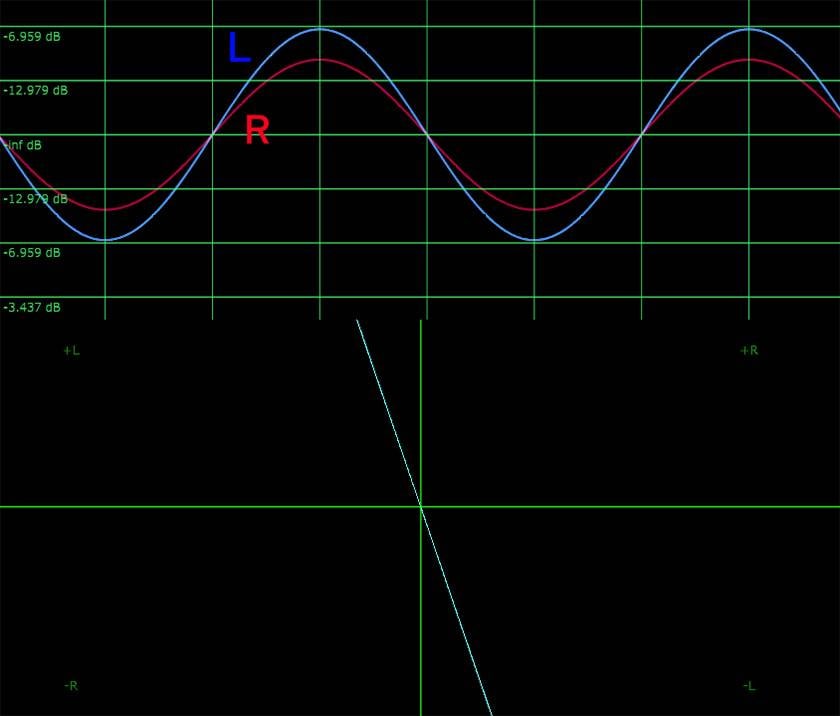
Lowering the Mid volume widens the localization
Conversely, if the mid volume is lowered by an extreme 18dB, the left and right channels will mutually generate phase inverted components, and the sound image will sound as if it is pseudo-spreading. This sounds artificial and unnatural, and gives an unpleasant impression, especially on speakers. In Lissajous, the phase exceeds 100% left. In practice, the level is seldom lowered to this extreme. Normally, treating it sparingly allows for an artificial spatial effect to the extent that it does not feel uncomfortable. For natural acoustic sounds, care should be taken as this can destroy the sound image.
- L: (0.1875*0.126+0.0625)=0.086=-21dB
- R: (0.1875*0.126-0.0625)=-0.039=-28dB phase inversion
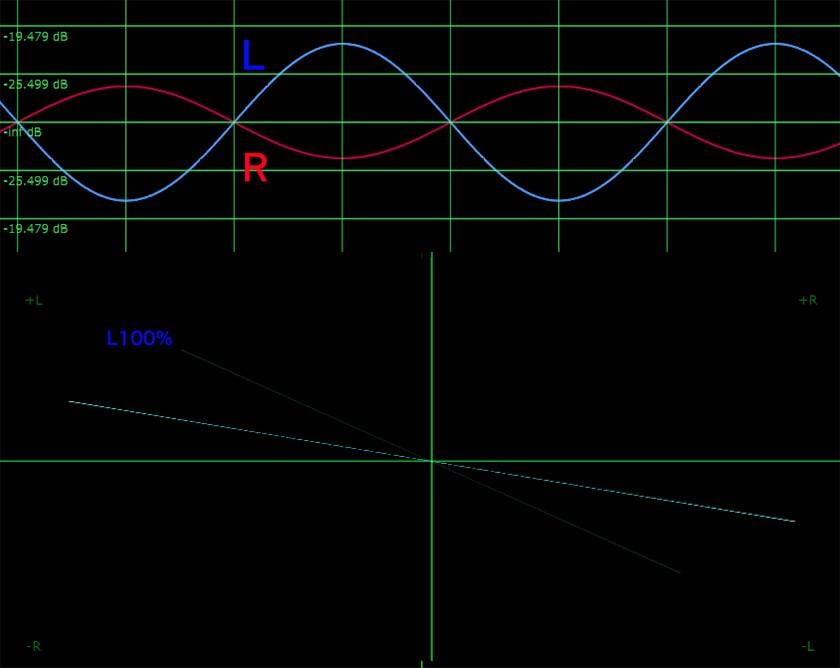
Increasing the Side volume widens the localization
When the Side volume is raised by an extreme 18dB, the left and right channels mutually generate phase inverted components, and the sound image is pseudo-expanded. Although the volume level is different, the same phenomenon occurs when the mid volume is lowered, and since lowering the mid volume will cause the main singer positioned in the center to be pulled back, most people usually raise the side volume to create a spatial effect. It is important to keep in mind that the Side sound is the sound that disappears when stereo is converted to monaural, as shown in the formula.
- L: (0.1875+0.0625/0.126)=0.68=-3.3dB
- R: (0.1875-0.0625/0.126)=-0.3085=-10dB phase inversion
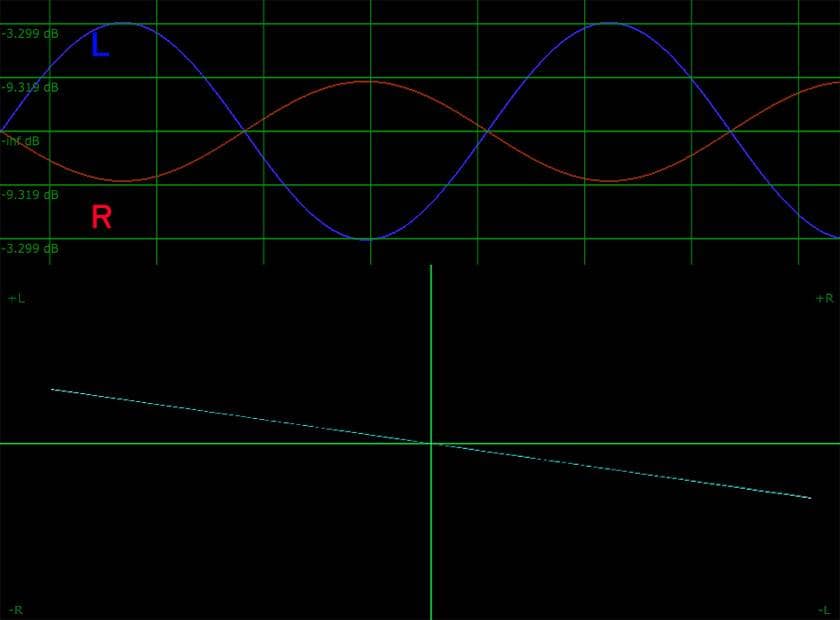
When the Side volume is lowered, the localization is closer to the center
When the Side volume is lowered by 6dB and returned to a stereo signal, the localization is closer to the center and is similar to when Mid is raised.
- L: (0.1875+0.0625*0.5)=0.21875=-13dB
- R: (0.1875-0.0625*0.5)=0.15625=-16dB
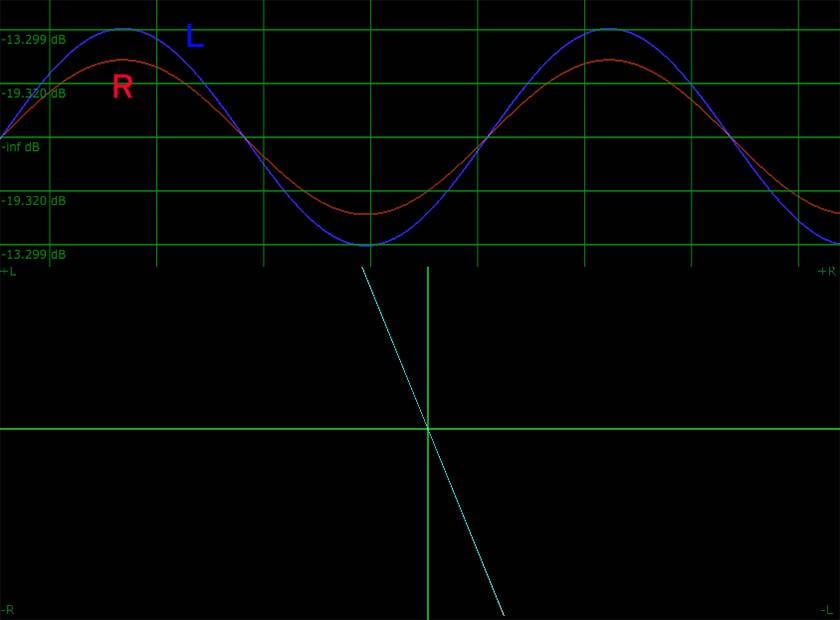
Decode
Converts M/S to stereo. If not processed after encoding, it returns to the original waveform as shown below.
- L: (0.1875+0.0625)=0.25=-12dB
- R: (0.1875-0.0625)=0.125=-18dB

M/S Processing with PRESSWERK
The main use of M/S processing is for mixing and mastering, but EQ is usually used. Another use for M/S processing would be for spatial effects as a special effect. If it is an artificial sound with a lot of synths, it can be used in a very loud way, but acoustic sounds need to be handled with care.
M/S processing with comp should be treated with more care than EQ because of the possibility of dizzying localization fluctuations on the time axis. This is tricky because the opposite effect works when the volume goes up or down, but if you understand the above principles, you can control it.
In PRESSWERK, pressing the M/S button sets CH1 to Mid and CH2 to Side, and comp can be applied to each channel separately.

The sample below is a humble example of M/S processing using comp. It is a simple rhythm of a drum hi-hat and ride, but the M/S processing is used to dynamically tweak the localization. The live sound of an acoustic instrument is not heard from a single point. So I created a pseudo image of a surface sounding. The first is dry, then M/S processing.
The “sound & person” column is made up of contributions from you.
For details about contributing, click here.





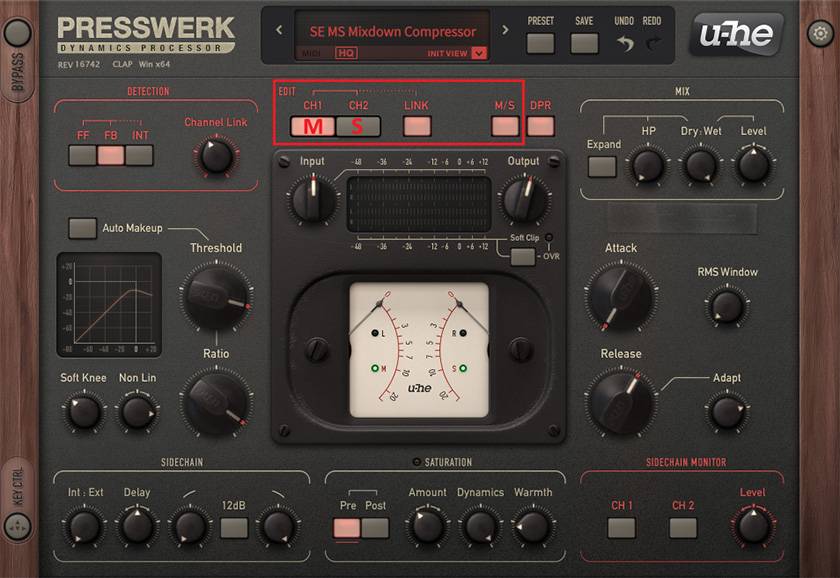

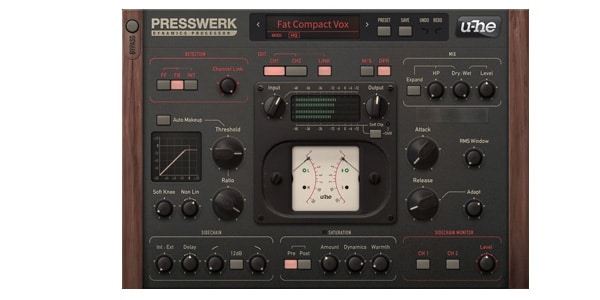





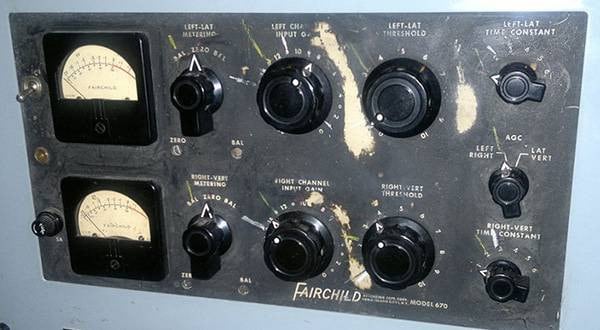
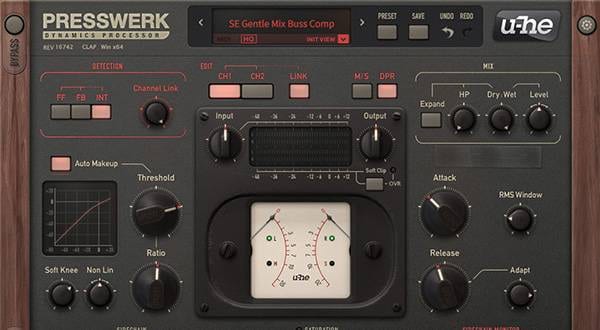
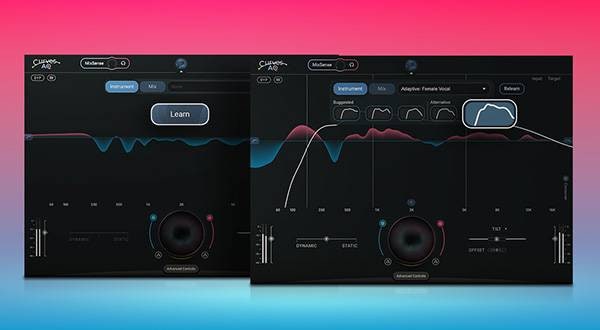
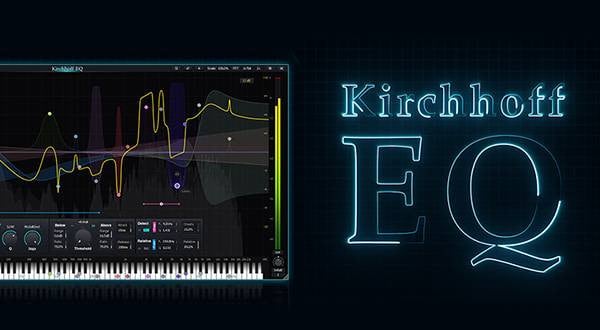
![Improve the Quality of Your Mixes with Ease! Recommended Plug-ins for Adding a Little More to Your Mixes [Waves]](/contents/uploads/thumbs/2/2022/3/20220304_2_16987_1.jpg)
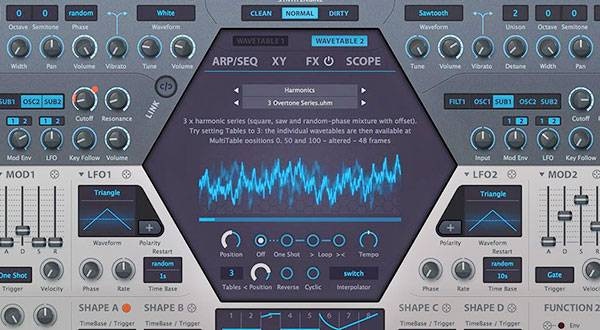
 厳選!人気のおすすめオーディオインターフェイス特集
厳選!人気のおすすめオーディオインターフェイス特集
 はじめてのボーカロイド
はじめてのボーカロイド
 Focusriteオーディオインターフェイスで始める音楽制作
Focusriteオーディオインターフェイスで始める音楽制作
 DTMセール情報まとめ
DTMセール情報まとめ
 機能で選ぶ オーディオインターフェイス
機能で選ぶ オーディオインターフェイス
 DTM・DAW購入ガイド
DTM・DAW購入ガイド















